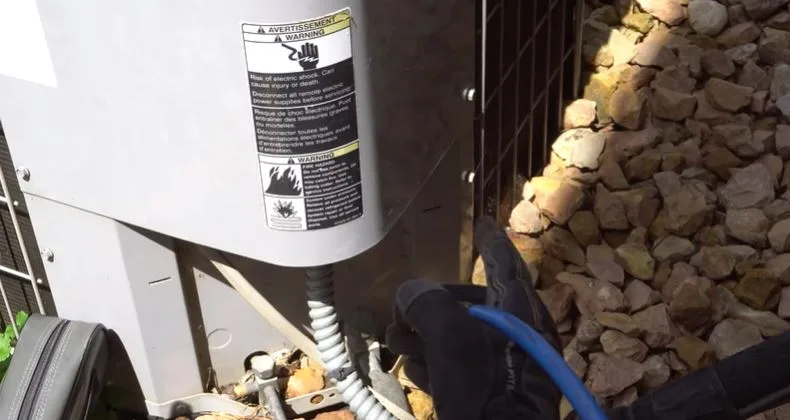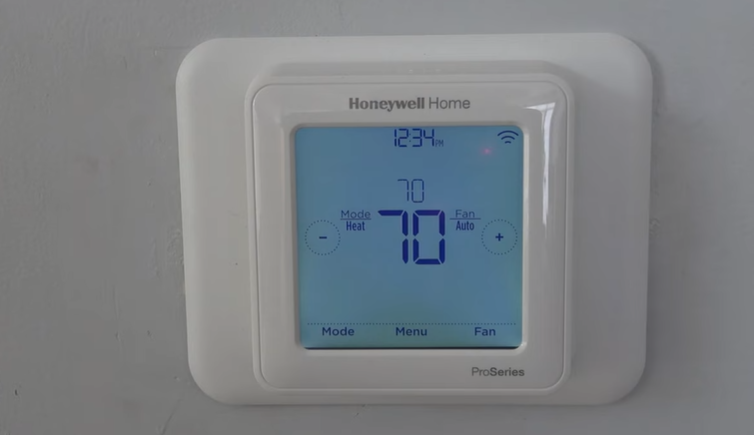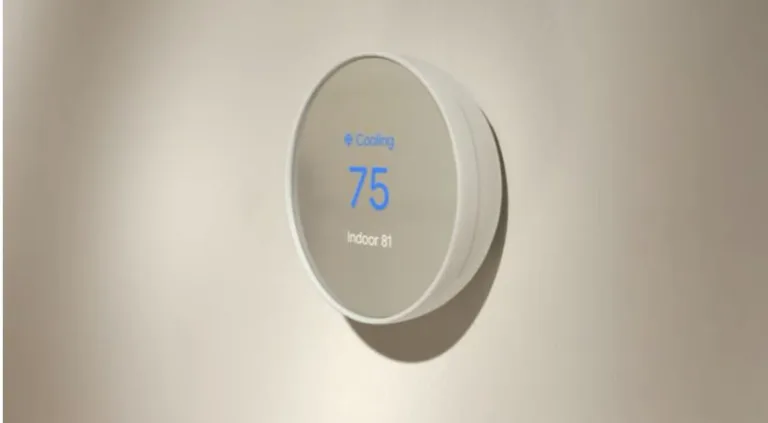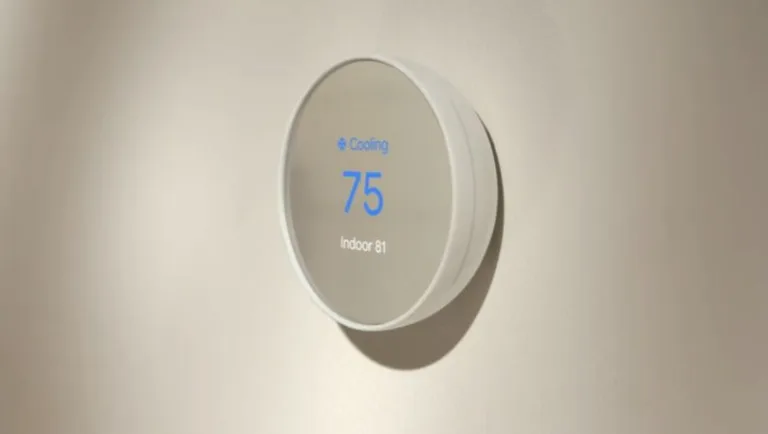How to Fix High Superheat Low Subcooling
When you are troubleshooting air conditioning systems or refrigeration systems you might come across a situation where you are facing a high superheat and low subcooling. But what causes a high superheat and low subcooling that mean and what measures should you take to fix the problem?
High superheat low subcooling on a TXV system means that there is no sufficient amount of refrigerant in the evaporator and there is low amount of the refrigerant in the condenser unit. This condition is mainly caused by low charge in an air conditioning system and can be fixed by sealing leaks and adequately charging the system with a refrigerant.

What causes high superheat?
Superheat determines the amount of refrigerant in the evaporator. A high superheat means there is an insufficient amount of refrigerant in the evaporator. This condition can be causes by a few things that include
- Excessive heat load
- Defective metering device
- Low refrigerant charge on the system
- Restriction in the liquid line
The above listed issues are the most common causes for high superheat on a TXV system. We have summarized them for you in table 1 together with their possible fixes
Chart for high superheat causes and possible fixes
| High superheat causes | How to fix High superheat |
| Excessive heat load | Check AC sizing |
| Defective metering device | Check or replace metering device |
| Low refrigerant in the system | Recharge with adequate refrigerant |
| Restriction in the liquid line | Check or unclog drier filter or kinkled lines |
Restricted or Defective metering Device.
A metering device and become defective or restricted. When this happens, the amount of refrigerant that goes to the evaporator will be restricted and this can cause high superheat on a system. A defected or restricted device can by caused by any of the following
- Foreign material in orifice of the TXV;
- Manufacturer’s defect in the valve.
- Oil-logged TXV from refrigerant flooding the compressor;
- Partial TXV orifice freeze-up from excessive moisture in the system;
- Clogged inlet screen on TXV;
- Receiver outlet valve (king valve) partially closed off;
- TXV adjusted too far closed;
- Wax build-up in TXV from wrong oil in system; and/or
Restricted liquid Line
The liquid line includes everything between the receiver and the TXV. This means that even the filter drier is part of the liquid and is one component that can become restricted due to excessive moisture and debris.. Other factors that can cause restriction in the liquid line include.
- Kinked liquid line;
- Restricted liquid line solder joint
- Sludge from the byproducts of a compressor burnout;
- Too much oil in the system
All these restrictions can potentially lead to a high superheat
Low refrigerant in the system
When the system is undercharged or there are leaks, the refrigerant will leak out and become insufficient for the system to work properly. Mistakes should be made between an undersized system and a restricted line.
Usually where you just have a restricted line, you won’t have a low subcooling in the condenser. For a system with an undercharged refrigerant,, you expect to have both a high superheat and low subcooling and measuring the subcooling should be the test to confirm that the problem is really with a low refrigerant charge.
If the problem is in fact a low refrigerant charge, be sure to find the leaks before reaching the systems with enough refrigerant.
Also read: AC high pressure line cold or hot?
Excessive heat load
When there is excessive heat load in the evaporator this will cause a high superheat. Excessive heat load in the evaporator can be caused by an unusually high ambient temperature or an undersized ac system. Check the two variables before going forward with other troubleshooting procedures.
What causes Low subcooling?
Subcooling is the measure of the amount of refrigerant at the condenser. When there is an insufficient or low amount of the refrigerant at the condenser, this is known as low subcooling. Likewise where there is excess amount of the refrigerant in the condenser, this is known as high subcooling.
A low subcooling can be caused by a few problems that include;
- Restricted air flow in the condenser
- Defective metering devices
- Refrigerant undercharge
- Compressor issues
Let’s look at table 2 which simplify each of the above causes together with the possible fixes
Chart for low subcooling causes and possible fixes
| Low subcooling causes | How to fix Low subcooling |
| Restricted air flow in the condenser | Clean condenser unit |
| Defective metering devices | Inspect the metering drive, if possible replace it |
| Refrigerant undercharge | Charge with enough refrigerant |
| Compressor issues | If compressor parts are worn out, you’ll need replacements |
Restricted air flow in the condenser
Restricted air flow to the condenser will result in high temperatures and build up of pressure. The built high pressures will cause more refrigerant to enter into the flow line and consequently leaking insufficient refrigerant at the condenser. The whole process will rest in low subcooling.
This problem on the other hand can be prevented or reduced by allowing amore air flow to the condenser. This can be achieved by keeping the condenser coils and fins cleansed to allow more surface area for heat exhaustion.
Defective metering devices
A defective or malfunctioning metering device is another possible cause for low subcooling in any HVAC system. A metering device controls the flow of the refrigerant in the system. But this can malfunction and when this happens it could restrict the flow of the refrigerant into the condenser unit.
The best thing to do to fix this problem is to clean the metering device. In cases where this does not fix the problem , you might want to replace the meter power head.
Leaking/ Low refrigerant
Low refrigerant charge on any system will also result in low subcooling. Low refrigerant level can be caused by a system that has leaks.. If there is a low charge of the refrigerant on the system, this will result in a high superheat and a low subcooling.
As mentioned earlier in this guide, start by finding leaks before recharging the system with any more refrigerant.
Defective Compressor
A malfunctioning compressor or one that is not compressing the refrigerant properly will deprive the condenser of the refrigerant. A detective compressor can be a result of a defective capacitor or any other compressor component.
Based on your test findings, and if the problem is any of the compressor components, most likely they can easily and cheaply be replaced but when the compressor itself is dead, you will need to replace the whole compressor.
Superheat and subcooling troubleshooting chart
| Probem | Possible causes | How to fix |
| High Superheat and Low Subcooling | Low refrigerant charge on liquid and suction line | Find leaks, seal and recharge with sufficient refrigerant |
| Low Superheat and Low Subcooling | Orifice too big, TXV opened too much | Adjust TXV |
| Low Superheat and High Subcooling | Overcharged system on both liquid and suction line | Remove and recharge to the appropriate level |
| High Superheat and High Subcooling | Restricted TV or drier valve, blocked blocked/restricted coil | Check TXV tightness and the insulation |
| Low superheat | Low indoor air flow, overcharged system. | Remove some refrigerant, recharge to appropriate level |
| High superheat | Low charge,, low outdoor airflow | Add refrigerant. Clean condenser unit |
| Low subcooling | Low outdoor air flow, low charge | Add refrigerant to the system, clean condenser unit |
| High subcooling | Weak compressor valves, overcharged systems | Discharge some refrigerant, replace compressor |
| Low suction pressure | Low charge, low indoor air flow | Recharge freon to appropriate level , replace air filters |
| Low head pressure | Low charge, weak compressor valves | Recharge with more refrigerant, replace compressor |
| High suction pressure | Weak compressor valves, low outdoor airflow, overcharge | Remove excess freon, clean condenser, replace compressor |
| Low indoor TD | Weak compressor valve, low outdoor airflow | Clean condenser or replace defective compressor |
| High indow TD | Low indoor air flow | Ensure coil and air filters are clean |
We have put this chart in pdf below:
What is high superheat and normal subcooling?
High superheat occurs when there is an insufficient amount of the refrigerant in the coil and normal subcooling is when there is just enough refrigerant in the condenser.
So a condition where you have excess refrigerant in the coil and enough refrigerant in the condenser is referred to as high superheat normal subcooling.
Usually when you have High superheat you expect to have a low subcooling or high subcooling so generally speaking high superheat normal subcooling is a rare condition on any system.
How to determine superheat and subcooling (Practical Examples)
REQUIREMENTS
To check for superheat on a system follow you will need:
- Special thermometer for taking pipe temperature
- Temperature/ pressure chart for converting the taking pressure to temperature
PROCEDURE
- Take pipe temperature to the suction line
- Take the pressure at the suction line and convert it to temperature using the temperature/ pressure chart
- To get the superheat get the difference between the two temperature points
- Superheat is about 10 degrees for many systems( taken at the evaporator coil) and 20°F to 25°F near the compressor.
EXAMPLE 1. CHECKING SUPERHEAT
If I wanted to check superheat on a R-22 system,I would start with taking the pipe temperature and let’s say the suction line temperature is 51 degrees. I would then take the suction pressure as well.
Let’s say the suction pressure is 70 psi . Converting this on a R-22 temperature pressure chart converts to 41.
The difference between the two temperature point is:
51 F-41 F= 10 F degrees.
10 F superheat is normal when taken at the evaporator. Anything above is considered high superheat and anything lower is low superheat. Now let’s look at another example for checking subcool
EXAMPLE 2. CHECKING SUBCOOLING
Subcooling on systems that use thermostatic expansion valve (TXV) is approximately 10°F to 18°F
To check subcooling on a R-22 system, I will need to attach a thermometer near the liquid line at the condenser. Suppose my temperature reading is 90°F. I would then take the head pressure. Let’s say the head pressure is 278 psi. Converting my head pressure to temperature on the T/P chart will give me 125 F.
Therefore the difference between the two temperature points is:
125 F-90 F= 35 F.
Because Subcooling is above normal range, this means that we have a high subcooling . If the temp difference was below the normal range it would be a low subcooling and if it was within range, it would have been normal subcooling.
Final Thoughts
To wrap up, we have seen in this guide how you can fix high superheat low subcooling. We believe you have been able to find the refrigerant leaks and sealed them. If you have any questions, you can contact me directly on [email protected] and I will personally help you regarding this.
Useful resources:
https://www.youtube.com/watch?v=dExFtP-nXTw&t=2s


![No Condensation from AC And No Cooling[Solved]](https://thermostating.com/wp-content/uploads/2023/01/condensate-pipe-jpg.webp)
![AC Not Working Thermostat Says Wait [Solved]](https://thermostating.com/wp-content/uploads/2022/12/ac-condenser-unit-768x395.png)

![White Rodgers Thermostat Blinking Snowflake [Solved]](https://thermostating.com/wp-content/uploads/2023/02/white-rodgers-thermostat-768x395.png)